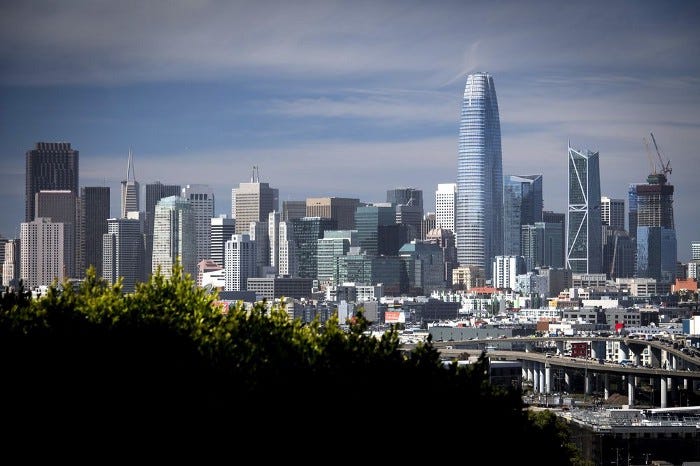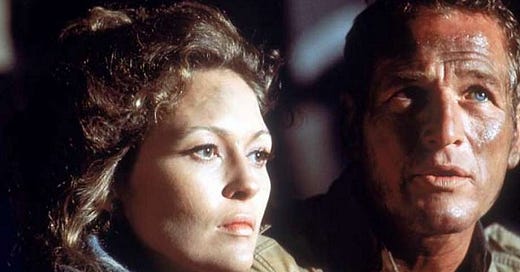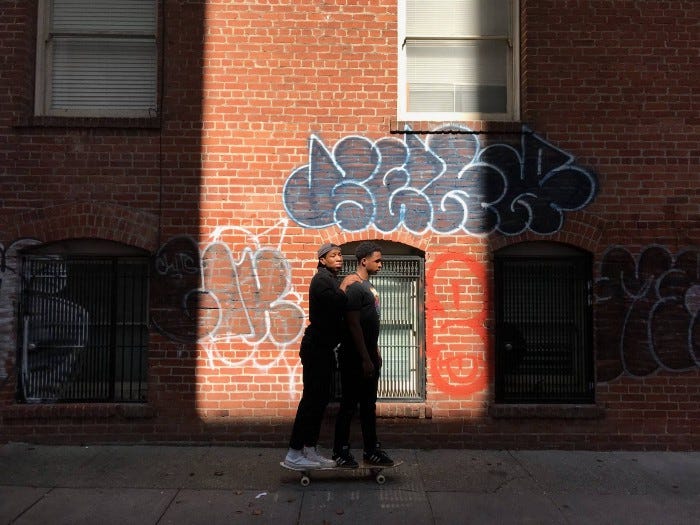Why The Towering Inferno Is an Allegory To Contemporary Anti-Capitalism
An allegory to gentrification if there ever was one in a blockbuster spectacle.
San Francisco-set films are as diverse as the mythic city itself: a pastiche of culture and commerce as free-flowing as the history of The Haight district. These two principles pose a paradox so relevant to the city’s history: two vignettes that convey both a thriving artistic ecosystem, and another of high-stakes neo-liberalism. This duality has shaped the city since the gold rush era, and upon viewing The Towering Inferno (1974) last month, I saw the anti-capitalist bent and artistic flair authentic to the city in its 1970s form. What was revealing though, was how this vilification of industry titans and politicians felt so contemporary. Much like the much more recent The Last Black Man in San Francisco (2019), Inferno taps into this sinister have-and-have-not underbelly in a similar, albeit shallower and white-washed, way. It’s a sentiment that rings true to San Franciscans, New Yorkers, and other city-dwellers who long for a balance between aggressive free enterprise an hardworking, humanist community.
The Towering Inferno (1974) is a celebrated, but also parodied action film of the mid 1970’s, and is currently streaming on HBO Max. Now widely available to modern eyes, its narrative can be dissected with a revitalized lens of activism. A view tarnished by an even more robust financial and technology industry in San Francisco and a majority of American cities have been overwrought with. With a glassy skyscraper built with funds championed by local politicians, ruthless builders, and insanely modern design features, it is a token of modern consumerism and excess: an allegory to gentrification if there ever was one in a blockbuster spectacle.
While highly lauded as one of the most successful of the 1970s disaster films and a multi-Oscar winner for its effects, Inferno transcends its technical prowess and genre status when viewed in a contemporary light. A much deeper story is revealed when we take a closer look at the archetypes portrayed by William Holden, Steve McQueen, and Paul Newman. The portrait of good and evil is clear: the working class are the heroes, and the rich deserve to burn for what they have sacrificed for corporate gains.
Its capitalist builder Jim Duncan, played by William Holden, cuts corners to maximize profit, and the result is the prime conflict of the film; a fire that kills hundreds of people and exhausts public utilities, while the elite walk away in their evening wear, albeit a bit scorched. For the entirety of the movie, we see the lavish party attended by corporate flacks, politicians, and residents of the tower juxtaposed with the strength and fervor of the blue collar laborers working to stop the blaze, led by battalion chief played by the handsome everyman Steve McQueen. It’s as if we’re watching the pandemic or another disaster play-out in San Francisco or New York or any other major metropolitan area: the lower classes actively deal with the situation while the wealthy flee. Except unlike the 2008 financial crisis, the golden parachute is actually a gilded cage. The wealthy attendees cannot leave, and the lower echelon must come to their rescue.
The San Francisco setting makes for an epic showdown between these blue collar heroes, and the neo-liberal executives in the vein of Mark Zuckerberg or Elon Musk whose wealth has come under scrutiny as real estate and power has been consolidated to a new ruling class. Much like San Francisco’s Salesforce Tower, the glassy high rise in Inferno is a beacon of contemporary capitalism and a token of progress. Even the Salesforce Tower, the Ricon Tower, and the other high profile investments in San Francisco real estate in the last few years have seen structural issues and potential disaster. Yet these monuments to late-stage capitalism continue to go up. Will it only resonate with the wealthy when they are atop the penthouse while it burns?

As a native of the San Francisco Bay Area, I have seen the transformation of the region into a new gilded age of tech tycoons and venture capital that has decimated the middle class. High rises continue to be built, bypassing public outcry, and longtime residents are displaced year after year. Those in the middle and bottom are left with the crumbs, to service those in the glittery towers as amenities. Yet it’s only when the wealthy are in danger do they need those in the lower caste. It’s the financial crisis, a hurricane, or the pandemic all over again. Taxpayers, please come to rescue the community when those in power squander resources for the bottom line.
The rich will continue to cut corners and create monuments to their greatness, while the rest of society is forced to pick up the pieces, and The Towering Inferno details this with its stark, moralistic definitions of dark and light so common in action films. Much like the characters in The Last Black Man in San Francisco, Jennifer Jones’ Lisolette Mueller, an adoring, compassionate teacher of the wealthy tower residents’ children, and other fire-fighters, civilians eventually are sacrificed for the salvation of the rich. After they’ve given so much to the community, their sacrifices and service dismissed. It’s those in the lower echelons that perish in the aftermath of the fire that ultimately pay the price, a situation that feels all too familiar in 2020.






